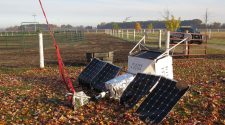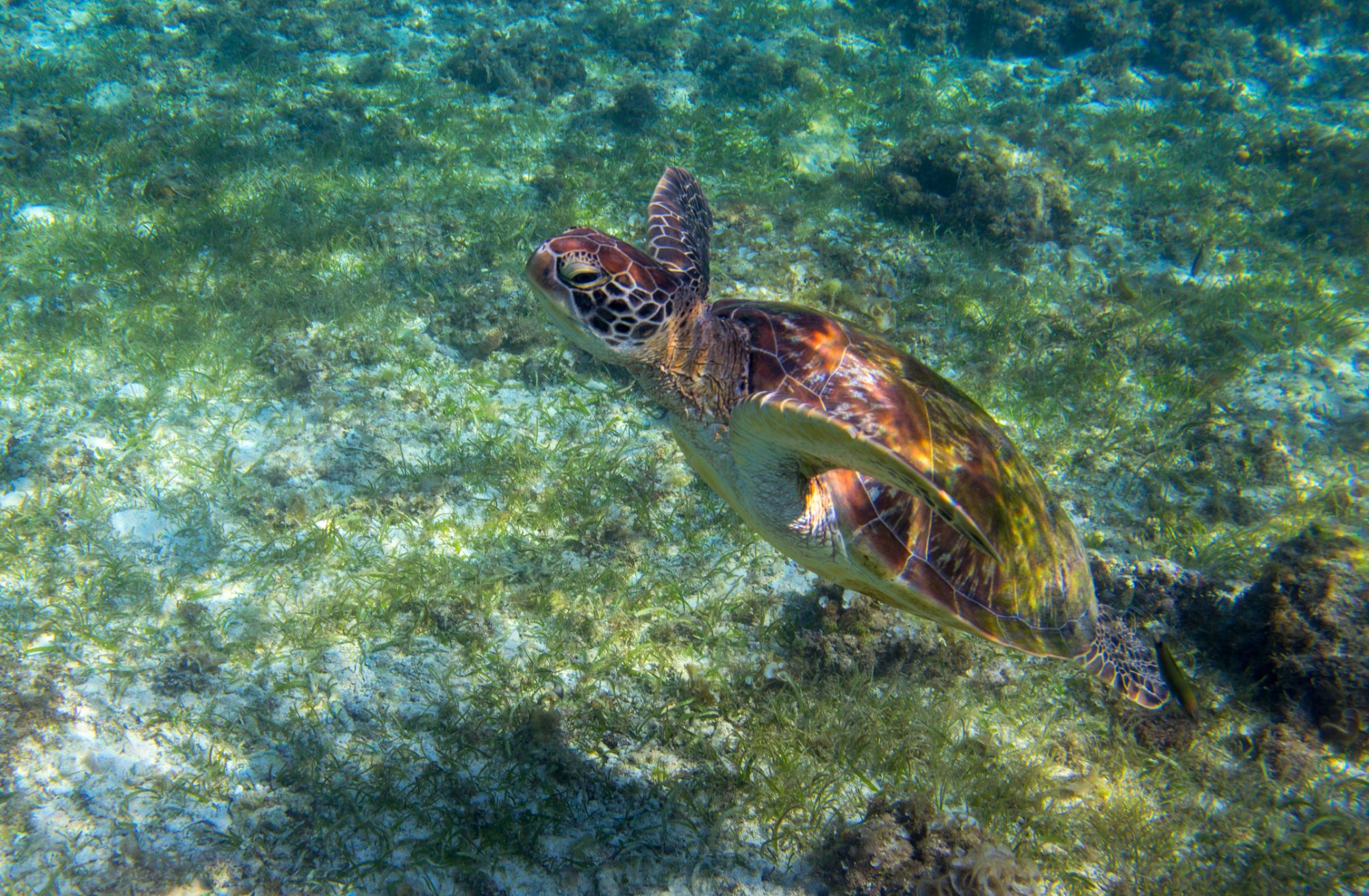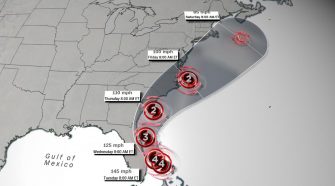Tessa Harding, Director, Aquatic Ecology, at Thomson Environmental Consultants asks if innovation and new technology can tackle environmental issues in today’s marine environment
The recent BBC documentary ‘Climate change: The Facts’ presented by David Attenborough highlighted the significant issues facing the marine environment linked to climate change. Seawater temperatures are projected to rise by an average of between 1 and 4oC by 2100, with increases in sea level rise that will threaten many coastal cities. A less well publicised, but equally pressing issue is the acidification of the oceans due to absorption of carbon dioxide. Currently, the ocean absorbs more than 26% of the carbon dioxide emitted to the atmosphere from human activities. (1) Increased acidity caused by carbon dioxide lowers the availability of calcium carbonate, a naturally occurring mineral in seawater, needed by marine organisms including plankton. A collapse in populations of these organisms will not only result in the loss of marine biodiversity but it will also have a significant effect on fishing and aquaculture. The Extinction Rebellion campaign calls for the UK to adopt a zero-carbon target by 2025. Climate scientists suggest that 2050 is more realistic, but how do we achieve even this target? This article reviews some of the challenges to the marine environment from climate change and other pressures, whilst exploring new technologies and innovations that are aiming to address them.
In the UK, the marine environment represents a key source of renewable energy with offshore wind now serving 9% of our energy needs and set to increase. Ambitious government investment 15 to 20 years ago allowed the wind industry to mature, reducing the cost of technology and turbine installation. Other marine renewable technologies, including tidal and wave power, have struggled to attract and sustain the same long-term vision. Government support for the Swansea Bay tidal lagoon scheme was withdrawn in 2018 on cost grounds, given the cost per unit of energy levied by the developer to the government to cover the cost of construction (known as the strike price), was £89.9 per MWh over 90 years, compared with £57.50/MWh for 15 years for offshore wind. (2) However, the first offshore wind farms required strike prices of £150/MWh, demonstrating the cost reduction benefits from a mature industry with growing private investment. Our coastline has some of the largest tidal ranges in the world, which is estimated to represent around 50% of Europe’s tidal resource. (3) The UK has the opportunity to be a market leader in this field.
The issue of plastics in the marine environment conjures up images of the floating islands of waste. However, it is the small particles, known as microplastics, made up of tiny plastic beads, granules, fibres and fragments less than 5 mm in diameter that represent the greatest threat to marine wildlife. As well as replacing food in the stomachs of marine animals, plastics can release chemicals as they degrade with potentially toxic effects. There is currently a wide range of research focused on the effects of microplastics. For example, Exeter University is collaborating with a U.S. environmental charity, The Rozalia Project to investigate these toxic effects. (4) Here at Thomson Environmental Consultants, our Principal taxonomist Ruth Barnich has established a formal classification and recording system for microplastics for use in the laboratory analysis of marine invertebrates. The system has been shared with UK Government agencies with the aim of improving consistency in the analysis of impacts on marine wildlife from microplastics.
The Great Pacific Garbage Patch is a term coined to describe an accumulation of plastic waste caught in circular currents or gyres in the Pacific Ocean. (5) Attempts have been made to clean up the patch, using a bespoke system comprising a 600m long boom or floater, with a 3 metre deep skirt for collecting floating plastic debris. The cleaning array moves faster than the plastic waste, thereby trapping it within the skirt for subsequent recovery. (6) The system has faced some teething problems and is now undergoing a further development phase before being launched for a second attempt. (7)
Commercial over-exploitation of fish stocks is another issue affecting global marine ecosystems. UNESCO report that 13% of global fisheries are believed to have collapsed due to over-exploitation. Even with a managed quota system such as the EU Common Fisheries Policy, there is a tendency for overexploitation – capitalising on apparent stock increases and responding slowly to decline. (8) The capacity of fishing fleets and their ability to exploit a wider range of species and larger areas has increased considerably and at a global scale. The designation of Marine Protected Areas (MPA’s), in which fishing activity is prevented or heavily reduced, coupled with quota systems, are generally acknowledged to be the most effective methods for reducing or even reversing fishing pressure. (9)
On a more local scale, an innovative method developed by the Nature Conservancy in Australia uses facial recognition software to create an app which allows fishers to collect information on catches at sea. By collecting, organising and sharing data using the app, known as FishFace, the aim is to help fishers manage fish stocks and reduce by-catch. The app won Google’s 2016 Impact Challenge. Additionally, simple innovations, like modifications to the shape of fishing hooks are being used in the Pacific island nation of Palau to target species and reduce bycatch. (10)
Pressures on the marine environment will increase with growth in the human population. Our seas also offer opportunities for renewable energy generation and sustainable food production. New and innovative technologies underpinned by objective scientific research must form part of the solution to achieving these goals. However, significant long-term investment, led by strong, political vision, is also needed to take innovations from simply a good idea to on-the-ground delivery at a local and global scale.
References
1) UNESO Blueprint for ocean and coastal sustainability.
(2) https://www.bbc.co.uk/news/uk-wales-42635571
(3) https://www.gov.uk/guidance/wave-and-tidal-energy-part-of-the-uks-energy-mix
(4) https://www.exeter.ac.uk/research/feature/microplastics/
(5) https://www.nationalgeographic.org/encyclopedia/great-pacific-garbage-patch/
(6) https://www.theoceancleanup.com/technology/
(7) https://www.businessinsider.com/great-pacific-garbage-patch-ocean-cleanup-problems-2019-4?r=US&IR=T
(8) Rosenberg, A. 2003. Managing to the margins: The over-exploitation of fisheries. In Frontiers in Ecology and the Environment. https://www.researchgate.net/publication/250077447_Managing_to_the_Margins_The_Overexploitation_of_Fisheries.
(9) West, C.D. Dytham, C. Righton, D and Pitchford, J.W. 2009. Preventing overexploitation of migratory fish stocks: the efficacy of marine protected areas in a stochastic environment. ICES Journal of Marine Science, 66: 1919–1930. Christopher D. West, Calvin Dytham, David Righton, and Jonathan W. Pitchford
(10) https://digitalempowers.com/innovation-marine-conservation/
Tessa Harding
Director, Aquatic Ecology
Thomson Environmental Consultants
Tel: +44 (0)1483 466 000
www.thomsonec.com
















